The trash bag-like material strips the face fabric off 3-layer GORE-TEX for maximum waterproof breathability and ultra-low weight, but there’s a catch.
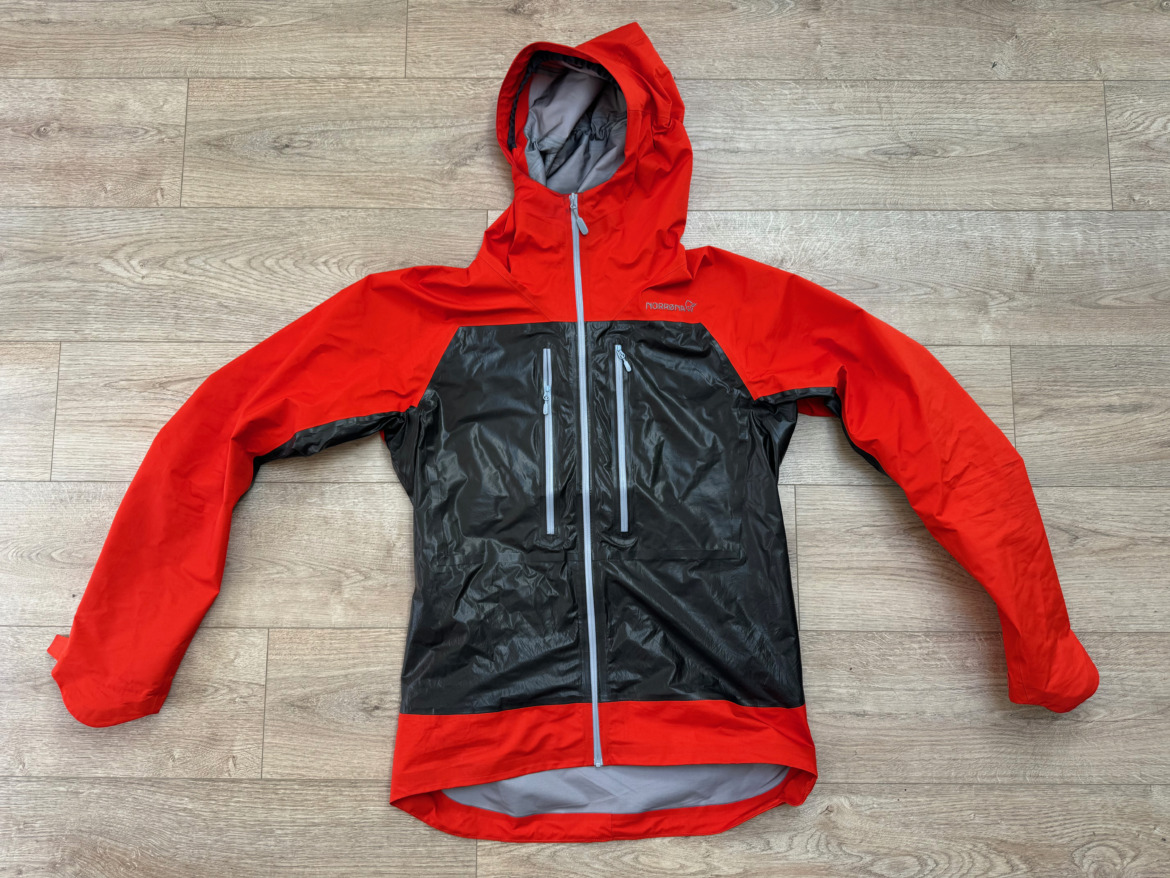
I’m not sure how many more times I can flip flop on where I stand in the hardshell/softshell jacket for ski touring debate before I give up on having a strong opinion (Side note: I’m firmly in the softshell pants for touring camp). Yes, softshells breathe better. Yes, hardshells blunt icy ridgetop wind and block dumping snow better. And yes, hybrids of the two land somewhere in the middle on both benefits and tradeoffs. Also also yes, softshells and hardshells are both getting better as companies innovate.
Norrøna’s Lyngen Active Jacket ($649) adorned with GORE-TEX Shakedry is the subject of my second installment of “Ultra-breathable jackets I had no problem sweating through.” But jokes aside, in a market driven by marginally better features, incremental tweaks, and enhanced marketing vernacular, Norrøna took an actual leap. Was it a leap forward or laterally? I’ve got a hunch.
In ski touring circles, the Norwegian company is known for doing one thing very well – making waterproof outerwear that can stand up to the absolute harshest, wettest conditions. Its gear is high-quality, often brightly colored, and as jarring on the credit card as its top-end competitors (looking at you, Arc’teryx).
I’ve tested a bunch of Norrøna’s jackets, which integrate the full spectrum of GORE-TEX’s waterproof membranes – GORE-TEX Pro in their Lofoten line, GORE-TEX ePE in their Tamok, and GORE-TEX Active in their Senja running collection to name a few. The brand was one of the first to begin working with GORE-TEX back in 1977. When a new membrane starts rolling out, there’s a good chance you’ll see it in one of Norrøna’s lines first.
GORE-TEX Shakedry isn’t new, but it has typically been incorporated into lighter duty garments designed for running and cycling. The Lyngen Active is its foray into backcountry skiing outerwear. If nothing else, it’s a bold experiment.
I’ve been skiing in the Lyngen Active Jacket this season through dumping snow, strong ridgetop winds, and warm springlike conditions alike to better understand how it stacks up to others in terms of breathability and protection, and whether the inevitable durability tradeoffs of GORE-TEX Shakedry make sense for backcountry skiers.
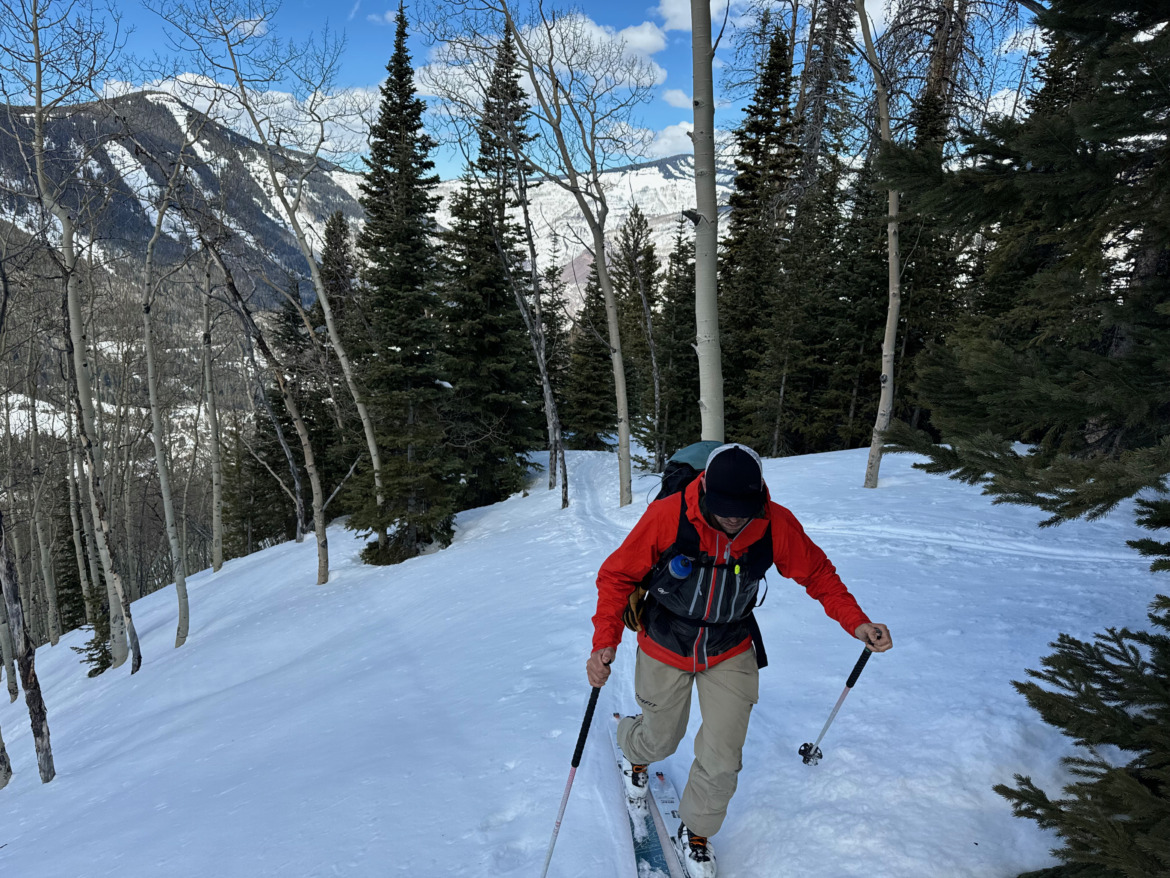
The author ascending in the Norrona lyngen jacket
Jacket Features
At 6’1” and 185lbs, I found myself right on the cusp between medium and large. While I surely would have been happy with the large, I went with the medium since I typically only wear a base layer and a sun hoody underneath a hardshell for mid-winter Colorado backcountry skiing and layer insulation on top when needed.
The whole jacket is built on Norrøna’s technical fit layout, and that could be my favorite part about it – I’m a stickler for good fit. Like many Norrøna products, it’s relatively narrow and long compared to other shell jackets, and that meant it fit well under backpacks and harnesses. The arms are also generously long with articulated elbows and cuffs that don’t creep down when I reach upwards.
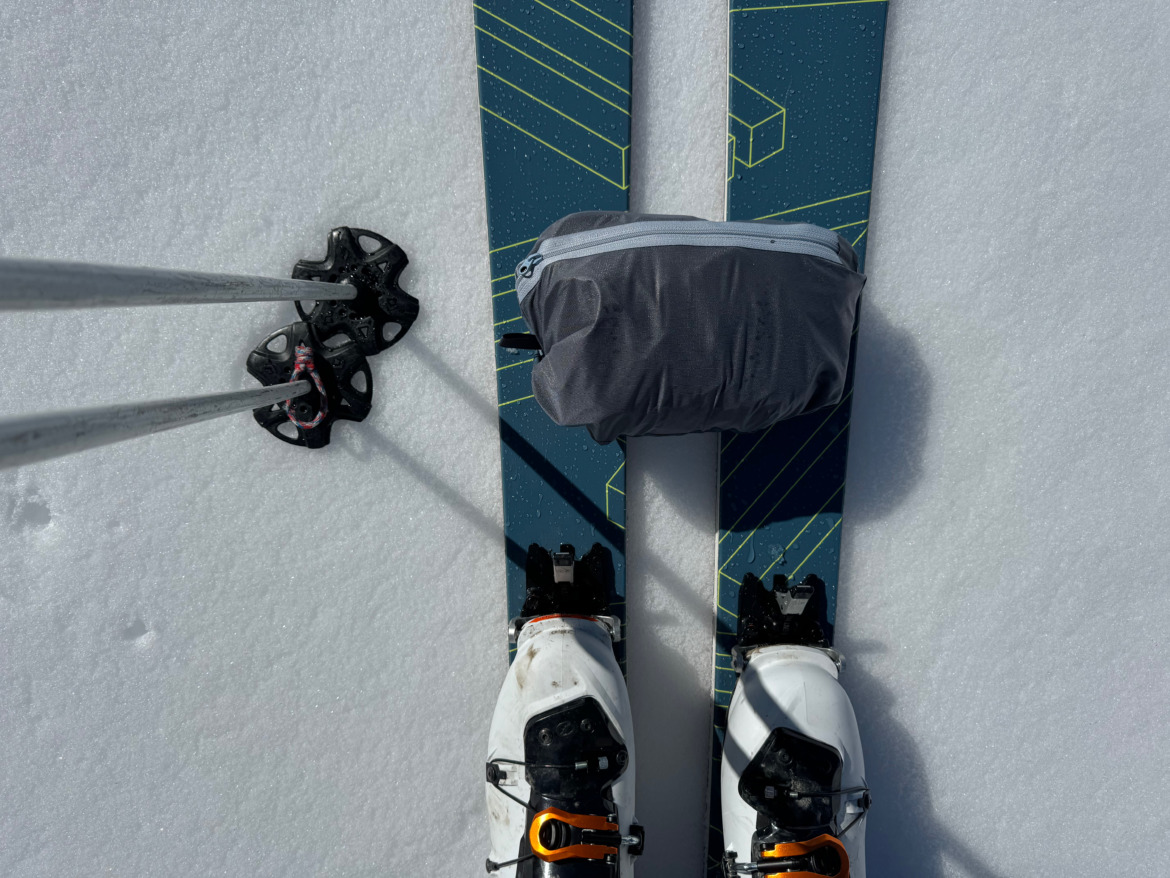
The Norrona lyngen jacket in it’s compressed form for transport
The Lyngen GORE-TEX Active jacket stands out on two fronts – It’s super light at a verified 297g (size medium) and packs down exceptionally small – about the size of a large potato when compressed. For reference, my Norrona Lofoten GORE-TEX Pro jacket weighs 601g and packs to the size of a small cantaloupe. My non-breathable Patagonia Alpine Houdini weighs 207g and packs into its own pocket to about three quarters the size of the Lyngen Active. I love things that stuff into their own pockets, so I was psyched to discover that the Lyngen Active also stuffs into its own chest pocket thanks to a zipper with inside/outside zippability.
Speaking of pockets, Norrøna nailed it with two big Napoleon pockets and nothing on the hips. It’s a simple, functional layout for ski touring that’s easy to manage with gloves on.
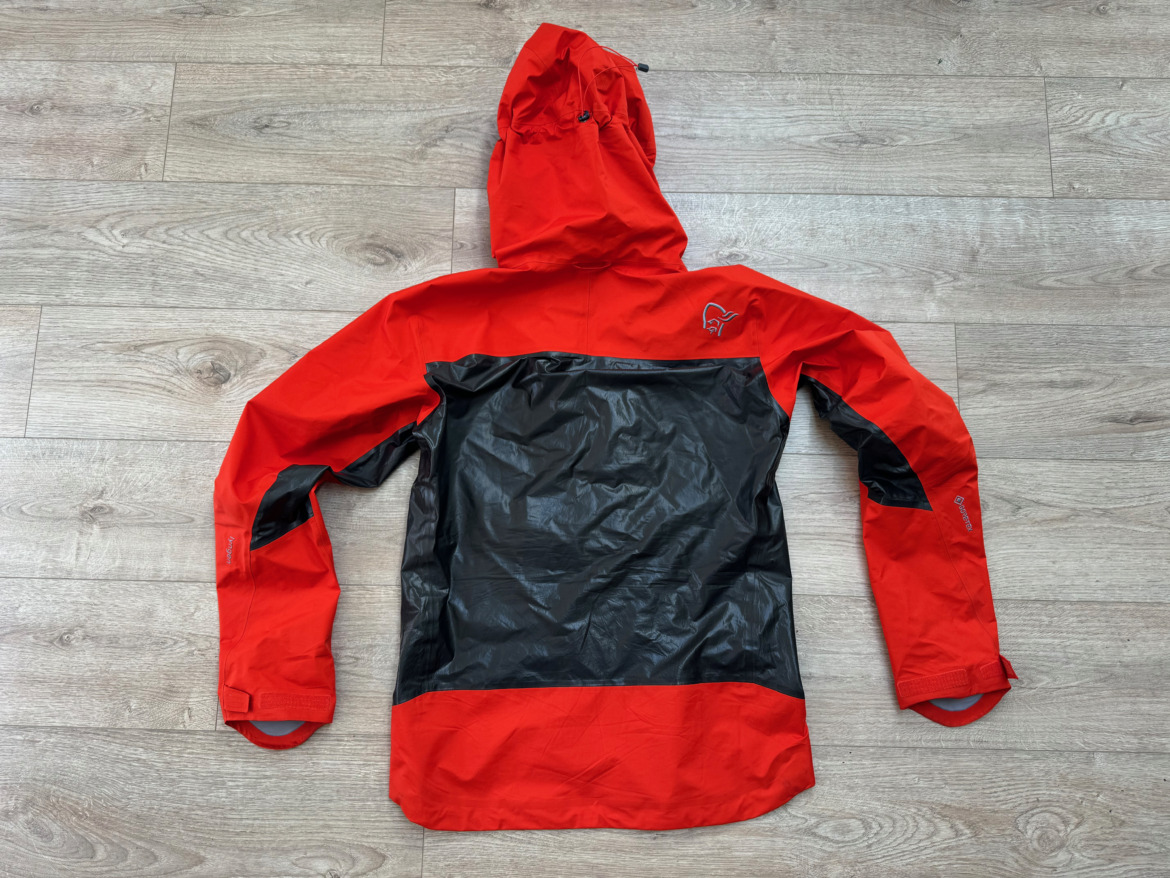
Breathability
The jacket isn’t wrapped in a black trash bag – that’s the GORE-TEX Shakedry. The fabric eliminates the protective face fabric of a typical three layer GORE-TEX sandwich (face fabric, porous membrane, and backer) for enhanced breathability, lower weight, and better water resistance. The fabric wraps around the body of the jacket and underneath the arms where you’d typically find pit zips.
The red arms, shoulders, hood, and hem are all GORE-TEX Active, a breathable 30-denier 3-Layer hardshell fabric – the lightest and most breathable three layer fabric that GORE-TEX makes. Both fabrics boast 28,000mm waterproof ratings, which of course is plenty for backcountry skiing in virtually any weather and possibly even underwater.
Here’s how Norrøna advertises the Shakedry fabric: “The new GORE-TEX® Shake Dry fabric durably protect against the weather and reduce sweat accumulation in high aerobic activities. Uniquely designed, the technology eliminates the face fabric, preventing absorption of water in order to maintain comfort in high aerobic activities. Garments will retain these attributes during use, wearers will not experience the chilling effect that can result from a wetted out face fabric, and the garment drys out fast. The excellent balance of protection and comfort allows the wearer to leave the garment on – rain or shine.”
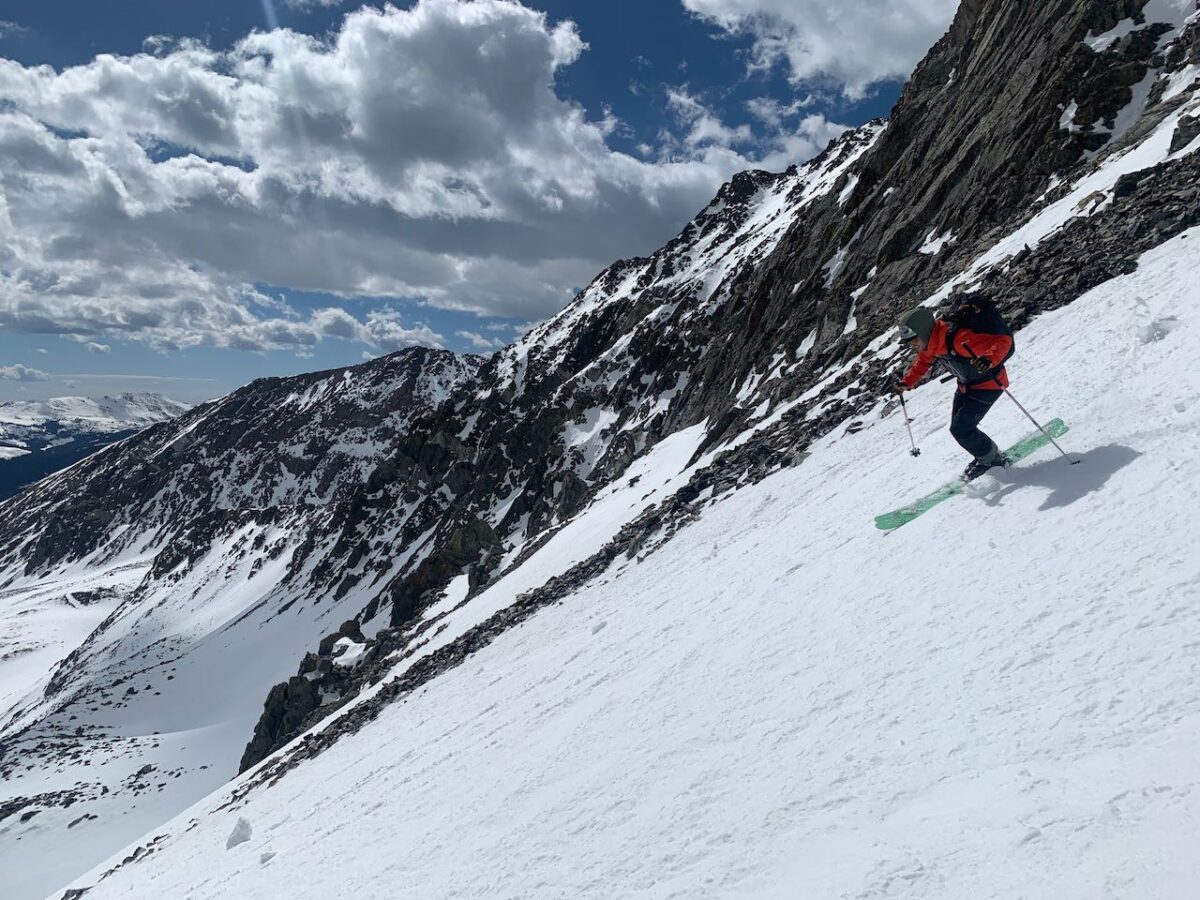
Resistance to Evaporative Heat Loss (RET) is a standardized measure of breathability. RET’s between 0 and 6 are considered very good for aerobic activities, and the lower the number, the better the breathability. GORE-TEX claims that Shakedry has an RET <3, making it “extremely breathable.” For reference, GORE-TEX Active claims RET <4, and GORE-TEX Pro gets an RET 6.
I don’t know many backcountry skiers that put on a hardshell at the trailhead and leave it on for the entirety of a tour. I certainly don’t. I keep my hardshell stuffed away until I’m transitioning, and then I throw it on and leave it on as long as I can. But over the last few months, after I’ve donned the shell, I’ve been able to keep it on longer in typical casual backcountry skiing scenarios.
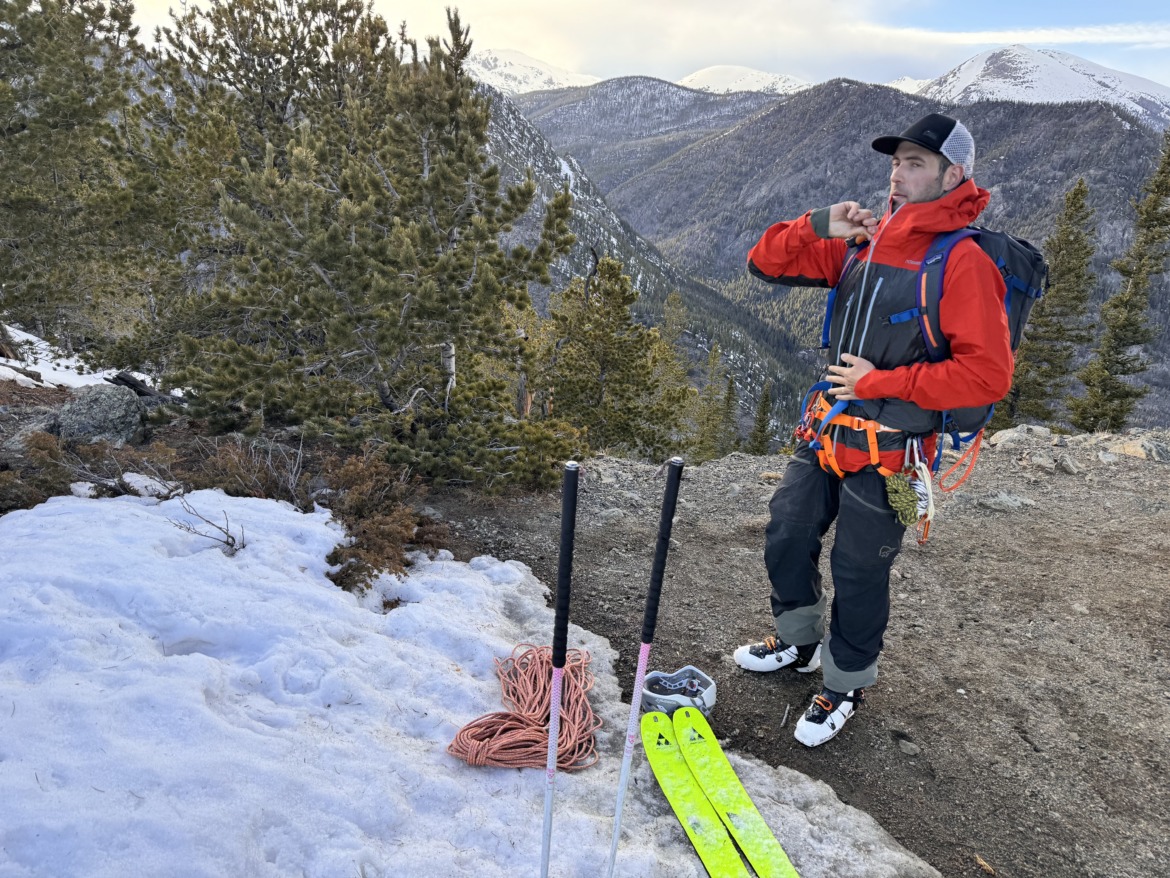
Like most shells, the lyngen is best saved for the descent.
On Vail Pass, for example, a mellow mid-winter backcountry zone characterized by relatively short 1k – 1.5k vertical runs, I’ve been able to put it on at the top of the first transition and continue wearing it for the following laps both up and down in temperatures below about 30 degrees. Same goes for good softshells, but I can’t say the same for GORE-TEX Pro.
From my experience touring in this jacket, the Shakedry fabric provides a very small breathability advantage over GORE-TEX Active, but you’d need laboratory-like conditions to flesh out the magnitude. I tested it back to back with another Norrøna shell I’ve been using for trail running and ski touring, the Senja GORE-TEX Active, and it was really tough to tell the difference in breathability on the skin track. At a strong pace near my aerobic threshold, I had no problem sweating through both of them even on cold days. But on moderate uphills at a moderate aerobic pace (comparable to an everyday jogging pace), I could keep both of them on much longer than GORE-TEX Pro shells, but shorter than softshells like my North Face Torre Egger and especially Black Diamond Alpine Start. Compared to my GORE-TEX Active jacket, the Lyngen felt just a smidge less clammy, but again, it was hard to quantify.
One of the claimed benefits of Shakedry, other than being lighter, more compact, and breathable, is that it doesn’t have a face fabric to wet out and clog the pores that facilitate airflow and evaporation from the inside of the jacket outwards (hence “Shake dry” – the water just beads off when you shake it).
That benefit could be what sets this jacket apart from other GORE-TEX Active shells, but only those users in exceptionally wet places like Norway or the Pacific Northwest are going to benefit from it. It’s exceedingly rare that I can find weather to fully wet out the face fabric of GORE-TEX here in Colorado. But I did get absolutely soaked on a dripping ice climb – water bounced and beaded off the Shakedry as advertised.
But here’s the rub – Norrona skipped venting pit zips on the Lyngen GORE-TEX Active Jacket and I’m not thrilled about it. I thought maybe the goal was to reduce bulk, or foster some kind of temperature or moisture differential between the inside and outside of the jacket to encourage airflow through the membrane, but so far I’m not convinced. I think pit zips would expand the breathability even further.
The Lyngen Active employs a unique but not new front zipper vent that is critical for airflow in lieu of pit zips. The main zipper essentially has two options – a normal zipper track that closes the jacket up, or a second zipper track, which also goes all the way to the chin, that exposes about an inch of mesh for about ¾’s of the zipper’s length. I’ve used a nearly identical system with the Black Diamond Dawn Patrol Hybrid Jacket. It’s a nice, low profile vent that doesn’t get in the way and adds some additional venting.
Durability Testing
Rightfully so, I was suspicious of the ultralight jacket’s durability. To get to the bottom of it, I wore this jacket all over the place – ski touring of course, but also trail running, resort skiing, and ice climbing. It didn’t take long to notice the difference in durability between the GORE-TEX Active and GORE-TEX Shakedry.
The red Active fabric is a lightweight version of GORE-TEX that I’ve enjoyed in several other jackets. For being so thin, it’s resilient. I dragged it over rocks, rubbed several trees, fiddled around with ice screws and crampons, and didn’t manage to cause any visible damage other than a few light scuffs here and there.
The black Shakedry fabric, on the other hand, is much less durable. I noticed scuffs quickly on the front of the chest around the pockets after the same treatment. Ice screws and my ice climbing harness have taken a toll on the bottom edge of the Shakedry – small holes have developed in the material that go all the way through to the transparent backer on the inside of the jacket.
Thicker branches have scratched it deeply, and one punctured it near the hip. To get a sense of how soft the material is, I could make a small hole with a few very firm pinches with my fingernails – it’s that soft.
So I got the result I expected – the Shakedry is vulnerable and it’s getting beat up from repeated backcountry use in abrasive conditions (e.g. tree skiing, ice climbing, rock scrambling). I can now appreciate why most GORE-TEX fabrics sport a tightly woven durable and tenacious face fabric. The porous membrane isn’t designed to fend off attacks from gear and the environment other than what falls from the sky without it.
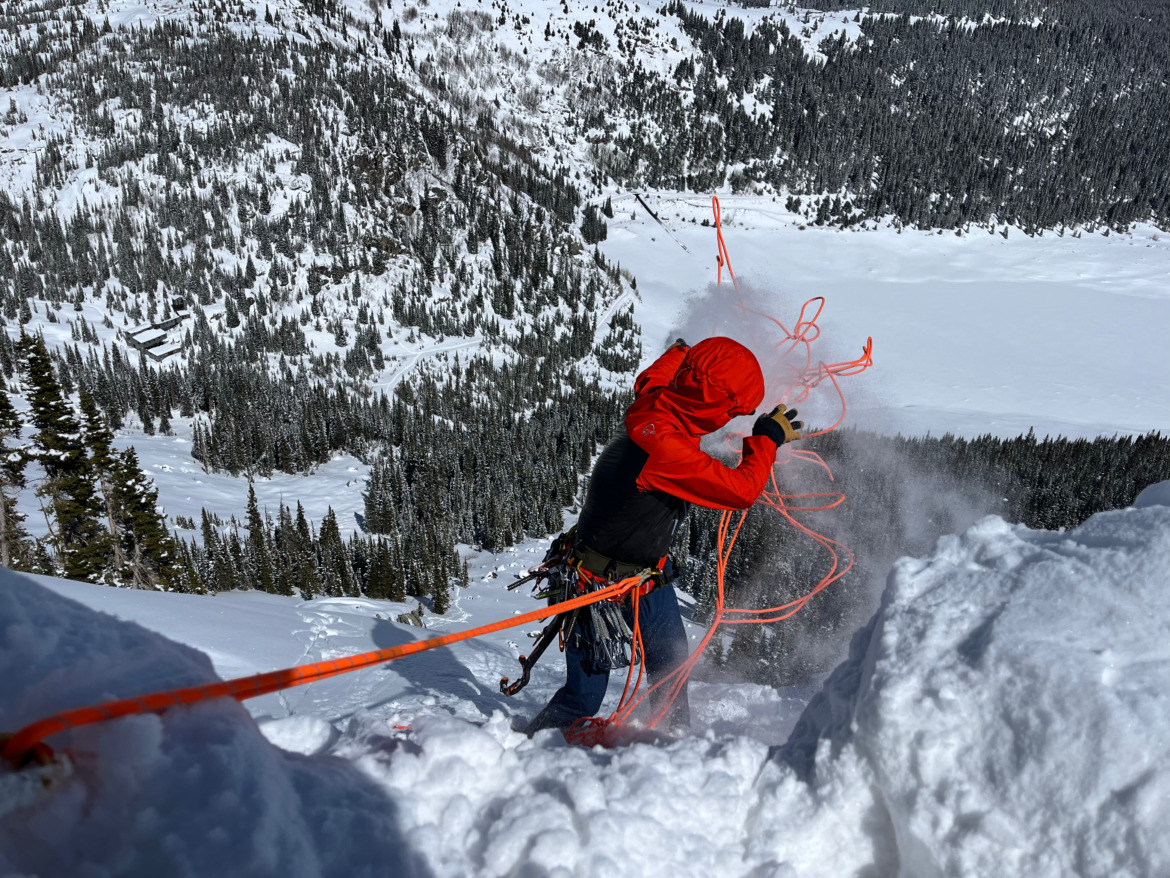
The Norrona lyngen jacket doesn’t have peak durability for abrasion-heavy activities. PC: Quinn Snowdon
Conclusion
Outerwear materials are getting better, but there’s still a gap – I have yet to come across a fabric, especially a water and windproof hardshell, that warm people like me can wear all the way through a tour, regardless of the weather, the pitch, or the pace. Softshells still get closer in this regard. But I appreciate Norrøna’s innovation in the Lyngen GORE-TEX Active Jacket. It’s the type of out-of-the-box thinking that’s going to get us there eventually.
Rather than a paradigm-shifting breakthrough, the addition of Shakedry to a touring jacket is an incremental step in breathability evolution in a field of hard-earned marginal gains. Like most innovations in the ultralight outerwear realm, it comes with tradeoffs. In this case, it’s durability.
The Shakedry fabric and the Lyngen GORE-TEX Active Jacket aren’t for backcountry skiers looking for a workhorse of a hardshell. It’s not a jacket that transitions well to ski mountaineering, bushwhacking, or hectic freeriding. Instead, it’s a great option for skiers looking for one of the most elegantly crafted breathable waterproof hardshells on the market who are willing to handle it with care, or those who will primarily benefit from its outstanding packability and light weight (and who will also handle it with care).
After patching a few small holes in the Shakedry, the Lyngen Active will continue holding down a spot in my jacket quiver for fast-and-light days above treeline when packability, wind protection, and breathability really matter.
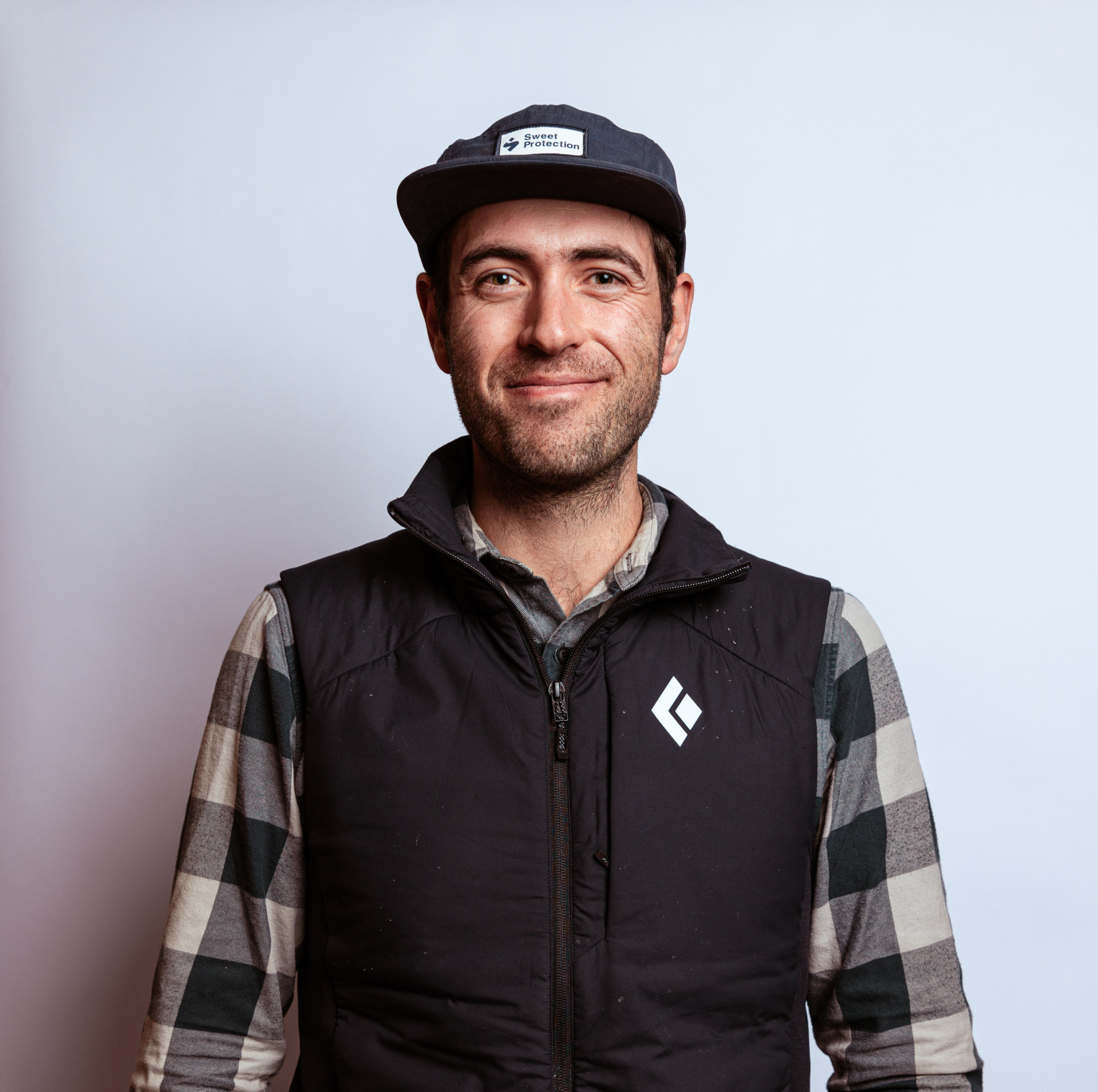
Bergen Tjossem is a ski fanatic, conservation professional, and nature nerd based in Vail, Colorado. His life and career have centered around protecting the natural environment and public lands that raised him, but as Ed Abbey put it, “It is not enough to fight for the land; It is even more important to enjoy it.” So when he’s not working his day job, you’ll find Bergen ski touring before dawn, ice climbing in the dark, running trails until his legs fall off, skiing 13er’s with his friends, or making the world’s best pizza with his wife, Rachel. You can find him on Instagram.
